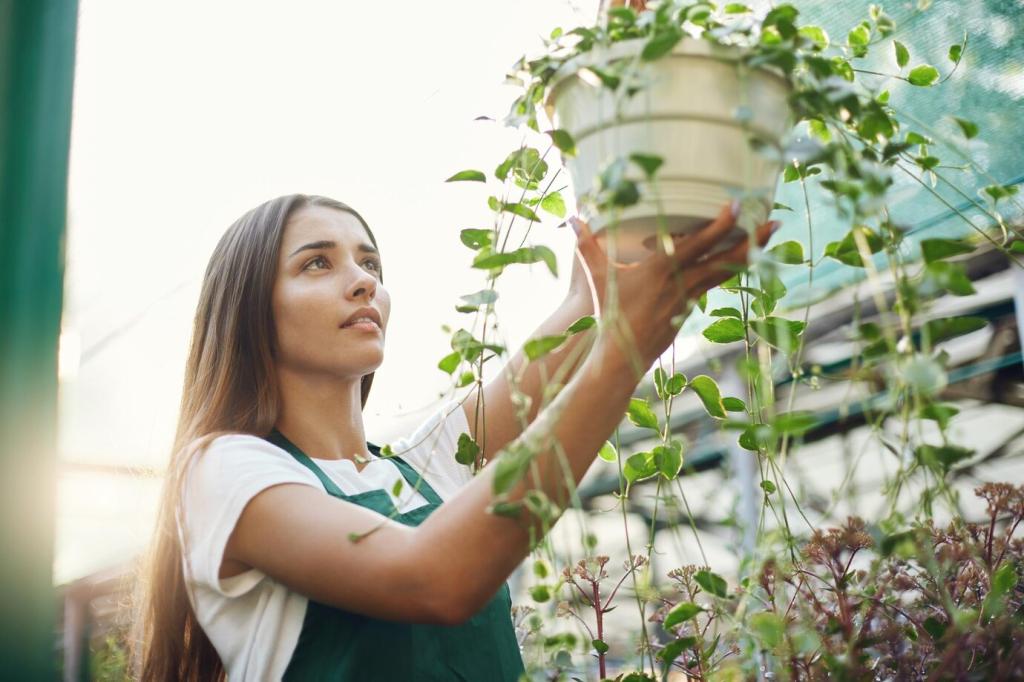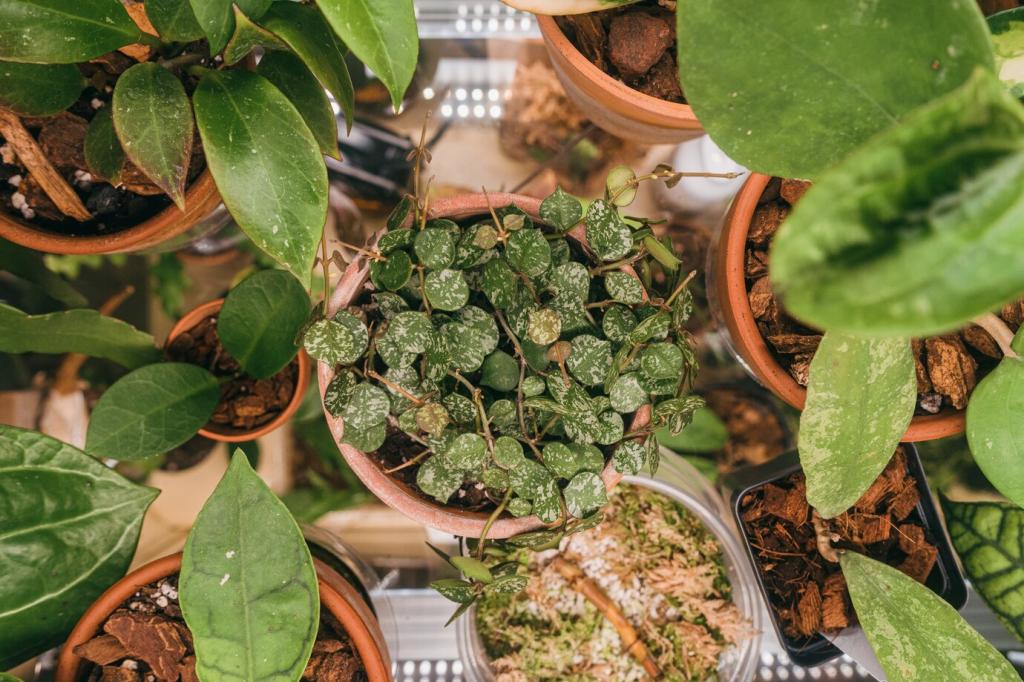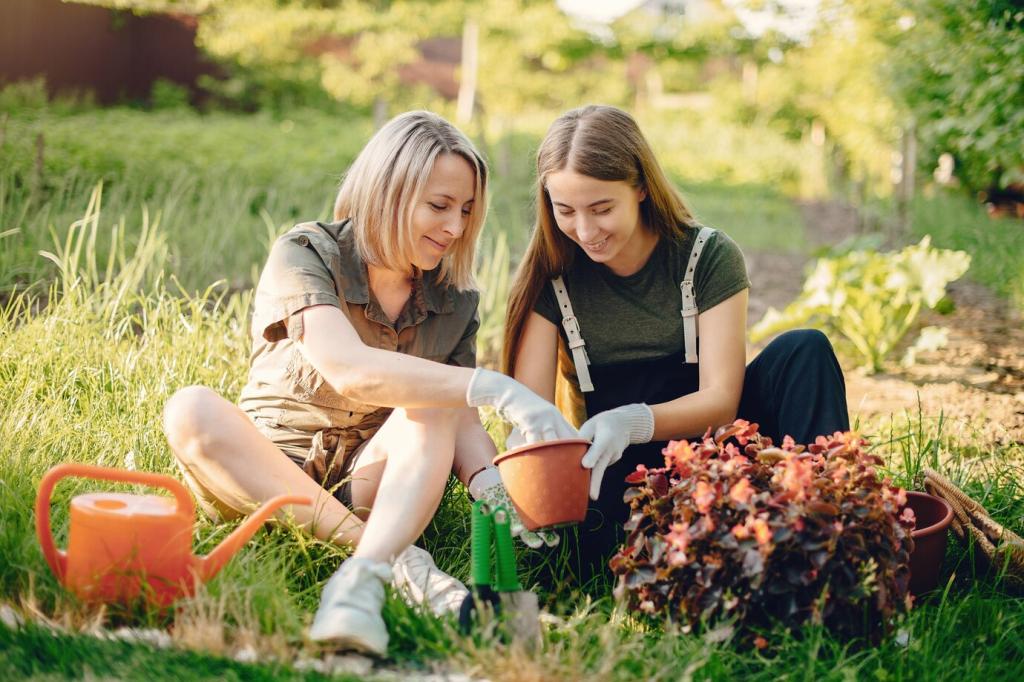Natural Pest Control for Gardens: Grow Abundantly, Fight Gently
Start with Nature’s Playbook
Step outside at different times of day and simply watch who visits your plants. You’ll spot predators, pollinators, and pests, each playing a part. Understanding these relationships helps you act thoughtfully instead of reactively.
Start with Nature’s Playbook
Lady beetles, lacewings, hoverflies, and tiny wasps are guardians, while aphids, caterpillars, and mites can quickly spread. Learn to distinguish beneficial adults and larvae. Post a quick photo and ask our community if you’re unsure.


Companion Planting That Outsmarts Pests
Classic Companions That Still Shine
Basil near tomatoes, dill among brassicas, and marigolds edging beds invite beneficial insects while masking host plant scents. These time-tested combinations reduce aphid flare-ups and cabbageworm damage. Share your favorite pairings and what you’ve observed.
Trap Crops and Sacrificial Rows
Plant mustards to lure flea beetles or nasturtiums to divert aphids away from lettuce. By concentrating pests, you can remove or treat a small zone. Comment if you’ve tried trap crops and how you timed their planting.
A Gardener’s Story from the Porch
When Maya ringed her zucchini with calendula and dill, she noticed fewer cucumber beetles and more hoverflies patrolling blossoms. Her journal notes showed damage fell by half. Try her approach and report your results next weekend.



Safe, Simple Garden Sprays and Teas
Soap Sprays for Soft-Bodied Pests
A mild insecticidal soap breaks down aphid and mite defenses on contact. Test on a single leaf, spray in the evening, and rinse lightly. Share your dilution ratios and whether leaf shine or burn ever occurred.
Neem Oil: Know When and Why
Cold-pressed neem disrupts feeding and growth of many pests but can stress tender leaves under hot sun. Apply after sunset, avoid open flowers, and repeat strategically. Comment with your schedule and any improvements you noticed afterward.
Garlic, Chili, and Comfrey Teas
Homemade infusions can repel pests and feed soil life. Strain thoroughly to protect sprayers, label clearly, and store briefly. Tell us your recipe successes and mishaps so we can compile a community-tested guide for safer brews.
Barriers, Timing, and Smart Design
Row Covers, Collars, and Netting
Floating row covers block moths and beetles while letting light and moisture through. Brassica collars foil cutworms, and fine netting protects berries. Share photos of your setups and the pest reductions you measured after installation.
Mulch, Watering, and Planting Time
Mulch stabilizes moisture and discourages slugs when paired with tidy edges. Water at soil level to avoid damp foliage. Plant a week earlier or later to dodge peak pest lifecycles. Tell us which timing shifts worked best.
Airflow, Spacing, and Raised Beds
Good airflow dries leaves and deters fungal outbreaks that stress plants and invite pests. Space crops generously and consider raised beds for drainage. Discuss your layout; we’ll help troubleshoot tight spots that invite trouble.
Scout, Track, and Decide with Confidence
Walk the garden with a notebook every few days, checking leaf undersides and new growth. Look for frass, stippling, and curled tips. Report what you find, and we’ll help identify patterns before they escalate.
Use yellow and blue sticky cards to track flying pests and place pheromone lures for species-specific insights. Data reveals timing for gentle interventions. Share your trap counts to compare trends across regions and climates.
Decide an acceptable level of damage for each crop before acting. This reduces unnecessary sprays and saves beneficials. Post your thresholds and we’ll suggest techniques that match your tolerance and harvest goals.

Birds as Patrol Partners
Install native shrubs, a shallow bath, and varied perches to invite insect-eating birds. Avoid netting during nesting season. Tell us which species visit your garden and how their presence affected caterpillar outbreaks this year.
Bats, Frogs, and Ground Beetles
A small pond, stacked stones, and evening-friendly lighting support nighttime predators that devour mosquitoes and beetles. Ground beetles hide under mulch and hunt slugs. Share habitat tweaks you made and what changed afterward.
Pollinators Strengthen Plant Resilience
Vigorous pollination leads to stronger fruit set and healthier plants that tolerate minor pest pressure better. Plant continuous blooms and avoid spraying open flowers. Post your bloom calendar to inspire others planning for year-round support.
